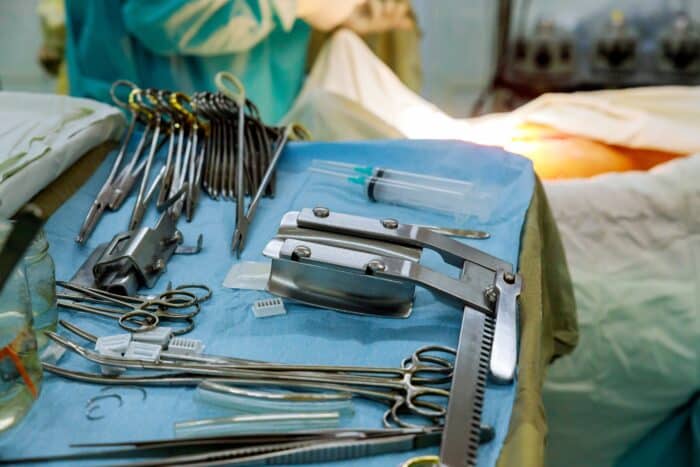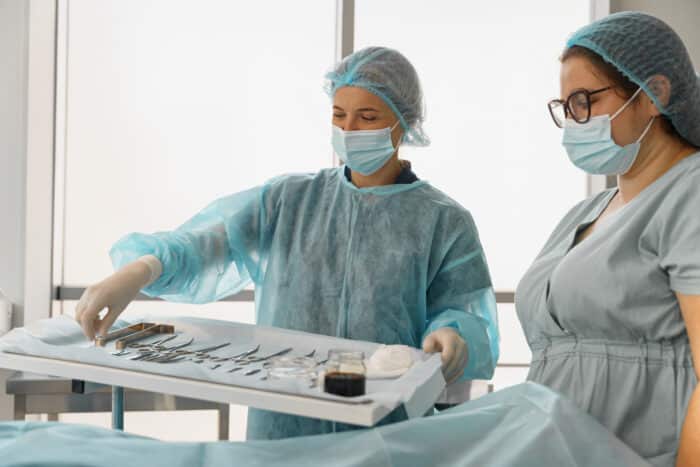Are you dreaming of becoming a top-notch sterile processing technician and entering the field of healthcare?
But are you also feeling a bit lost about what you need to do to get there?
Maybe you’ve heard about ‘sterile processing certification’ but aren’t sure if it’s super important.
We get it! We’re here to clarify whether getting certified is a big deal.
When employers hire sterile processing technicians for this job, having that certification is key. It shows you’re good at handling everyday tasks, like keeping medical stuff clean.
In this article, we will explain what it means to be a certified sterile processing technician, the different kinds of certifications, and answer some common questions you might have.
Let’s dig in and find out more!
What is a Certified Sterile Processing Technician?
A Certified Sterile Processing Technician is a professional trained to handle and maintain medical equipment’s cleanliness and sterility.
They are experts in disinfecting, assembling, and sterilizing medical instruments and equipment used in healthcare settings like hospitals or clinics.
To become certified, technicians usually undergo specific training and pass an exam, such as the CRCST exam, to demonstrate their knowledge and skills in maintaining a sterile environment and handling equipment safely. This certification ensures they meet the industry standards for ensuring patient safety by preventing infections and maintaining the quality of medical tools.
Read More: What is a Sterile Processing Technician
Types of Sterile Processing Technician Certifications
There are several certifications available for sterile processing technicians, each certification exam has its own specific focus and requirements, catering to different areas within the sterile processing field. Candidates typically choose the certification that aligns best with their career goals and interests. each offering its own exam:
1. Certified Registered Central Service Technician (CRCST): Offered by the International Association of Healthcare Central Service Materiel Management (IAHCSMM), this certification requires passing an exam covering various aspects of sterile processing.
2. Certified Sterile Processing and Distribution Technician (CSPDT): Offered by the Certification Board for Sterile Processing and Distribution (CBSPD), this certification exam evaluates knowledge in sterilization, infection control, and equipment handling.
3. Certified Healthcare Leadership (CHL): This certification from IAHCSMM is for professionals in leadership roles within sterile processing departments.
4. Certified Instrument Specialist (CIS): Also from IAHCSMM, this certification focuses on advanced knowledge and expertise in handling specialized medical instruments.
5. Certified Endoscope Reprocessor (CER): Specifically for professionals dealing with the cleaning and disinfection of endoscopes, this certification ensures expertise in maintaining these specialized medical tools.
Also See: What Does a Sterile Processing Technician Do?
Is Certification Really Required?
It’s a common dilemma for those aiming to become sterile processing technicians: wondering if certification is truly important.
While certification might not be mandatory in many states, employers favor candidates with certification over those without it.
Becoming a certified sterile processing technician tells employers that you possess skill, professionalism, and a commitment to your role. It signifies meeting industry standards and successfully passing a certification exam.
Employers lean towards certified technicians because it assures them of your aptitude for the job. Moreover, certification often opens doors to improved job prospects, increased pay, and opportunities for career advancement.
See: Best Online Sterile Processing Course
How to Become a Certified Sterile Processing Technician
The path to becoming a certified sterile processing technician might seem overwhelming at first due to the number of certifications and training programs available on the internet, but we get how confusing it can be.
No need to stress, though – we’re here to simplify it for you.
Here are four simple steps to kickstart your journey toward becoming a successful certified sterile processing technician:
1. Attain a high school diploma or GED:
Securing a high school diploma or a General Education Development (GED) certificate is the initial requirement to pursue a career as a sterile processing technician.
2. Choose and enroll in a suitable training program:
Enroll in a training program for sterile processing that offers theoretical knowledge and practical hands-on experience.
Even though there are in-person options such as associate degrees or diplomas available, opting for an online program comes highly recommended due to several advantages:
– Cost-effectiveness compared to other options
– Completion in a shorter duration, typically 2 to 4 months
– Flexibility to learn from anywhere, anytime
– Some online programs even provide externship opportunities post-completion.
3. Acquire practical experience:
Gain hands-on experience through externships or internships, often available upon finishing an online training course. This practical training allows regular practice in handling sterile equipment, preparing you for the role.
4. Obtain certification as a sterile processing technician:
While not important in all states, obtaining certification helps in enhancing your prospects as employers generally prefer certified candidates.
You can pursue certification through reputable organizations like the International Association of Healthcare Central Service Materiel Management (IAHCSMM) or the Certification Board for Sterile Processing and Distribution (CBSPD). Each organization offers distinct certification exams, so explore your options to find the best fit.
5. Apply for positions:
Once certified, begin applying for sterile processing technician roles at hospitals, clinics, laboratories, or other healthcare facilities.
What is the Difference Between a Sterile Processing Technician Certificate and Certification?
A Sterile Processing Technician Certificate is given after completing a training program focused on sterile processing techniques. It shows that someone finished a specific course, but it might not be widely recognized.
Sterile Processing Technician Certification, however, is a more official recognition. It shows that a person has met certain standards and skills needed in the field.
To get certified, someone usually needs to pass an exam like the CRCST (Certified Registered Central Service Technician) from a recognized organization like the International Association of Healthcare Central Service Materiel Management (IAHCSMM) or the Certification Board for Sterile Processing and Distribution (CBSPD).
So, a certificate is about completing a training program, while certification is more like passing a test to prove you’re really good at what you do. Employers often prefer certified individuals because it shows they meet a certain level of expertise in sterile processing.
See: Travel Sterile Processing Technician
Conclusion
Pursuing a Sterile Processing Technician Certification opens doors to a fulfilling career. This certification isn’t just about passing a test; it’s about proving your expertise in keeping medical equipment clean and safe.
Whether through hands-on training or online programs, getting certified sets you on a path to success in the rewarding field of sterile processing.
Also Read: How to Become a Sterile Processing Technician
Related Resources:
- Sterile Processing Technician Salary
- Sterile Processing Technician Requirements
- Sterile Processing Technician Resume
- Sterile Processing Technician Training
- Sterile Processing Technician Certificate Program
- How Long Does it Take to Become a Sterile Processing Technician
- Sterile Processing Technician Exam
- CRCST Certification
Related Articles
-
How to Be Successful in College in 2022 – 7 Simple Tips to Succeed
-
How Do Scholarships Work? Read This First…Truth is Shocking
-
7 Best College Majors 2024: What Should I Major In?
-
How to Choose a College – 10 Things You Must Consider in 2024
-
Why Go to College? Top 13 Benefits for Adult Students in 2022
-
Top 5 Best Alternatives to Community College for 2024








